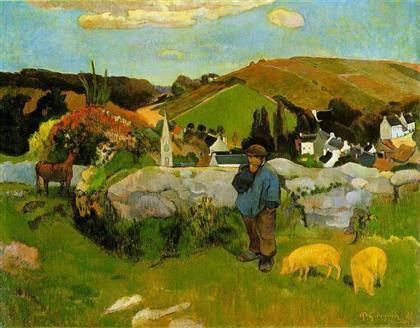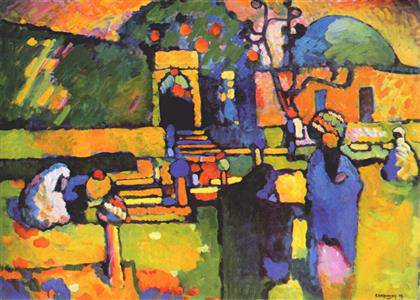
Paul Gauguin, The Swineherd (Le Gardien de porcs), 1888
oil on canvas
Los Angeles County Museum of Art.
Gift of Lucille Ellis Simon and family in honor of the museum’s 25th anniversary (M.91.256)
Photo © 2014 Museum Associates/LACMA

Wassily Kandinsky, Arabian Cemetery (Arabischer Friedhof), 1909
oil on cardboard
Hamburger Kunsthalle
© 2013 Wassily Kandinsky/Artists Rights Society (ARS), New York/ADAGP, Paris, Photo credit: bpk, Berlin / Hamburger Kunsthalle, Hamburg, Germany / Photo: Elke Walford / Art Resource, NY
German and French expressionism at the LACMA The Los Angeles County Museum of Art (LACMA) presents the exhibition ‘Expressionism in Germany and France: From Van Gogh to Kandinsky’. From June 8 to September 14, 2014.]]>
Source: LACMA
For the first time in a major museum exhibition, Expressionism is presented not as a distinctly German style but as an international movement in which artists in Germany and France responded with various aesthetic approaches to modern masters such as Vincent van Gogh, Paul Cézanne, Henri Matisse, and Paul Gauguin, among others. Over 40 artists—including Wassily Kandinsky, Emil Nolde, Gabrielle Münter, Franz Marc, Robert Delaunay, and Pierre Bonnard—are represented in over 90 paintings and 45 works on paper, in addition to approximately 30 ephemera objects.
“Expressionism in Germany and France” explores the process of artistic influence and contributes to new scholarship on issues of French-German relations. The exhibition offers insight into how the visual arts are conveyed between cultures and are influenced by ideas of national identity and cultural heritage.
Expressionism, an artistic movement in which pictorial imagery is depicted through dramatically expressive colors and brushwork, digresses from traditional representation in which artists attempted to recreate a likeness of reality; instead, the movement gives form to artists’ individual perceptions, feelings, and psychologies. While Expressionism has come to be recognized as a predominately German movement, this association evolved gradually long after the movement had begun and is partially attributed to the first book on Expressionism, authored by the German art critic Paul Fechter in 1914 and on view in the exhibition. The publication imbued the movement with a national identity, commensurate with the patriotic tone in Germany during World War I. In reality, Expressionism was born from a shared advance toward modernism among French and German artists as the latest French trends reached Germany through a network of collectors, critics, and art lovers, creating a mutually rich cosmopolitan milieu.
While some of the works by Cézanne, Gauguin, and Van Gogh date from the 1870s and 1880s, the main chronological scope of the exhibition ranges from approximately 1900 —when the works of these artists began to be exhibited in Germany— to August 1914, when the cosmopolitan climate of Europe was abruptly ended by the onset of World War I.
Related content
German Expressionism at the Baltimore Museum of Art (exhibition, 2014)
Follow us on:


